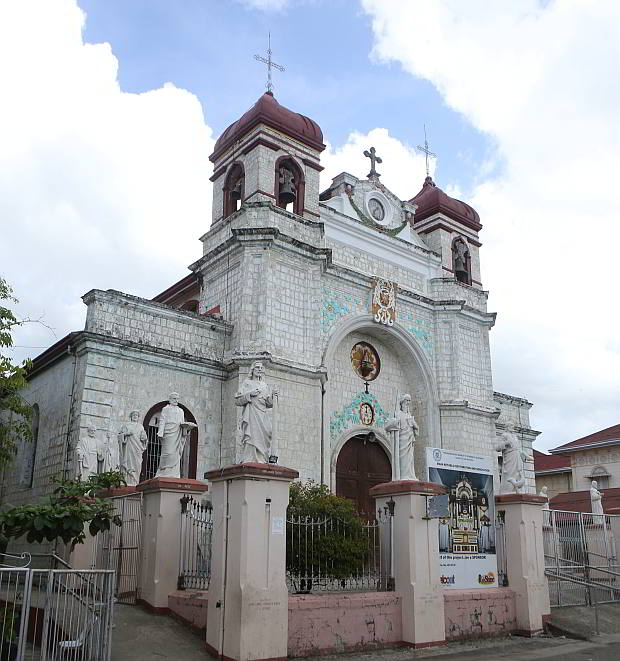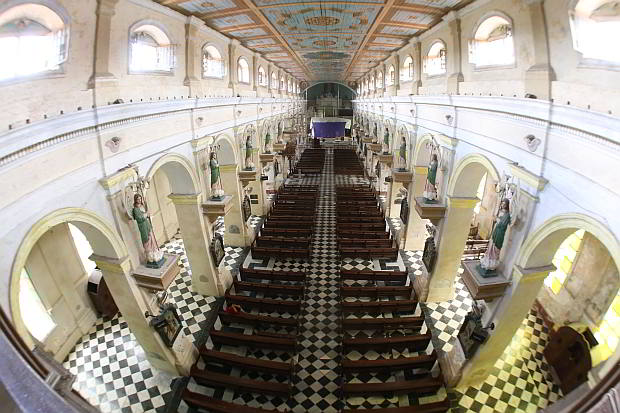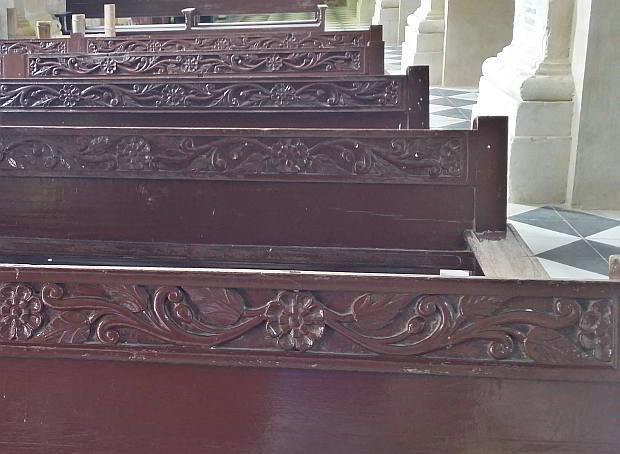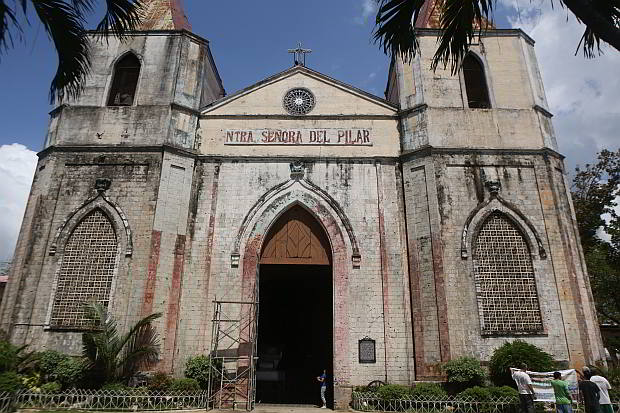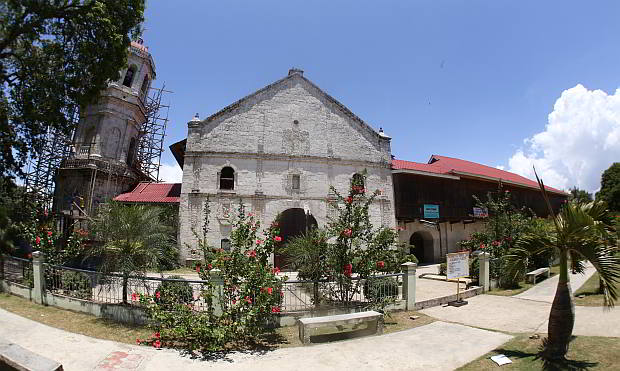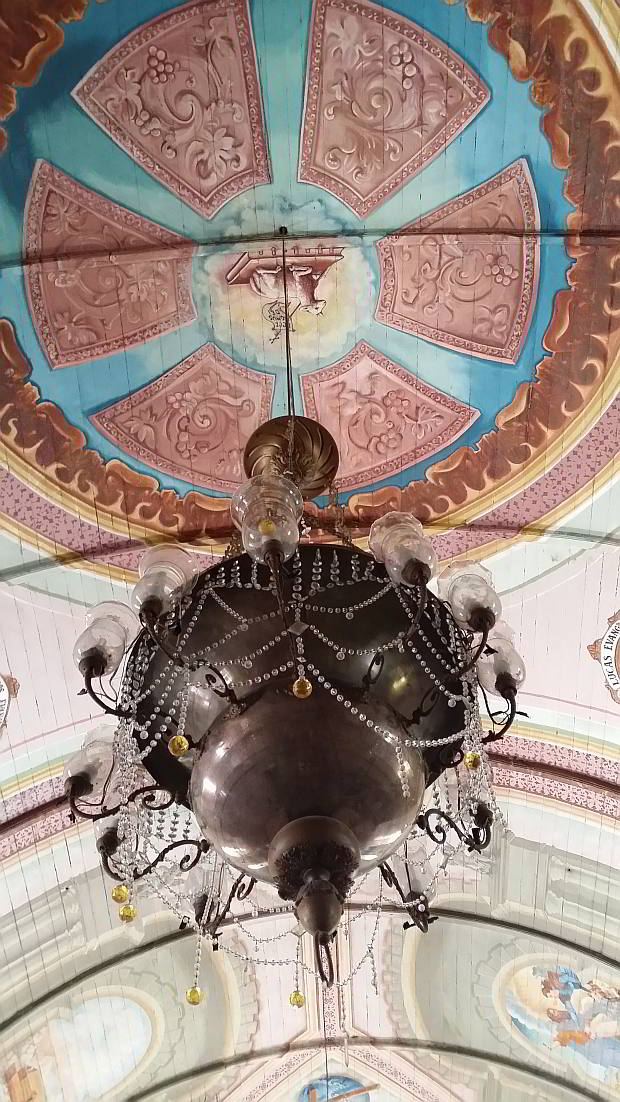(First Part)
Planning to go on a Visita Iglesia in Cebu? Going south would be a perfect choice if you intend to go on a long drive.
Seven heritage churches in Cebu were damaged by the 7.2-magnitude earthquake that hit Bohol and Cebu in October last year.
Cebu Daily News made an “advance” Visita Iglesia to three churches to give our readers a heads-up on what to expect in churches.
Santa Catalina de Alexandria Parish
Carcar City, Cebu
Before entering the Greco-Roman-inspired church, 13 larger than life whitewashed images of Christ’s apostles will greet visitors. The images stand atop columns at the church’s patio.
The 14th apostle, Judas Iscariot is isolated and partly-hidden beneath tree branches near the rectory.
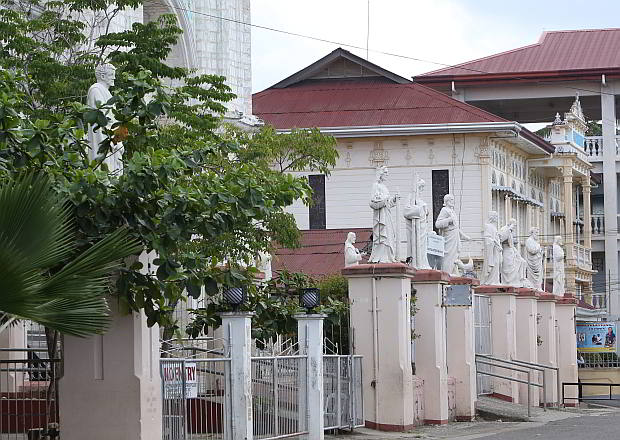
For some reason, Judas Escariot’s (left most) statue is isolated from the rest of the apostles at the church porch. The statue is now partly hidden by the tree branches near the parish rectory. (CDN PHOTO/ LITO TECSON)
It took 15 years to finish the structure which was constructed in 1860.
From outside, the pediment where a mechanical clock is found and the twin bell towers capped with onion domes are among the main attractions.
However, when the Oct. 15 earthquake hit Cebu, a portion of the belfry was damaged. The belfry has since been repaired and the church’s interior is being fixed.
Fr. Brian Brigoli, recently appointed as the new head for the Cebu Archdiocesan Commission for the Cultural Heritage of the Church, wants the original main altar retablo restored.
The 14 antiquated Stations of the Cross hang below 14 life-size winged angels in pink and green robes were sculpted by Gonzalo “Master Saloy” Abellana in 1920.
The intricate ceiling frescoes were painted by famous fresco master, Raymundo Francia who painted most of the ceilings of churches in Bohol and Cebu.
Before leaving the church, check out some interesting tombstones or pahinungod at the pier and some on the original harlequin-patterned flooring.
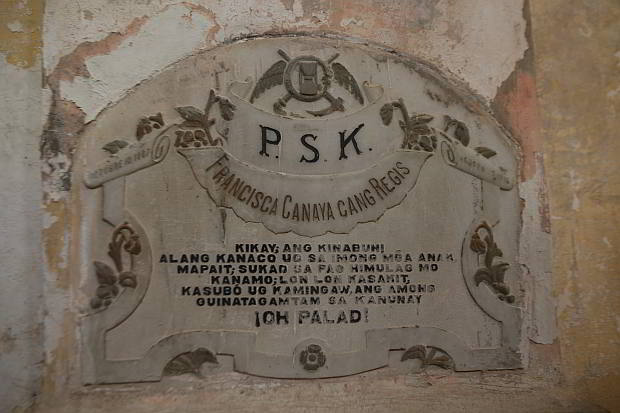
The tombstone of Francisca Canaya Cang Regis caught our attention because of her husband’s loving message to her. (CDN PHOTO/ LITO TECSON)
Less than 10 original pews carved in floral designs are found on the epistle side (right side facing the altar).
Nuestra Señora del Pilar Parish
Sibonga, Cebu
This Gothic-styled church features twin spires that flank the church’s main entrance. A rose window typical in Gothic architecture is found in the pediment.
The Sibonga church is built with coral stones and bricks in the 1800s and was finished in 1907.
The seven sacraments and some Biblical scenes painted on the ceiling were painted by Raymundo Francia.
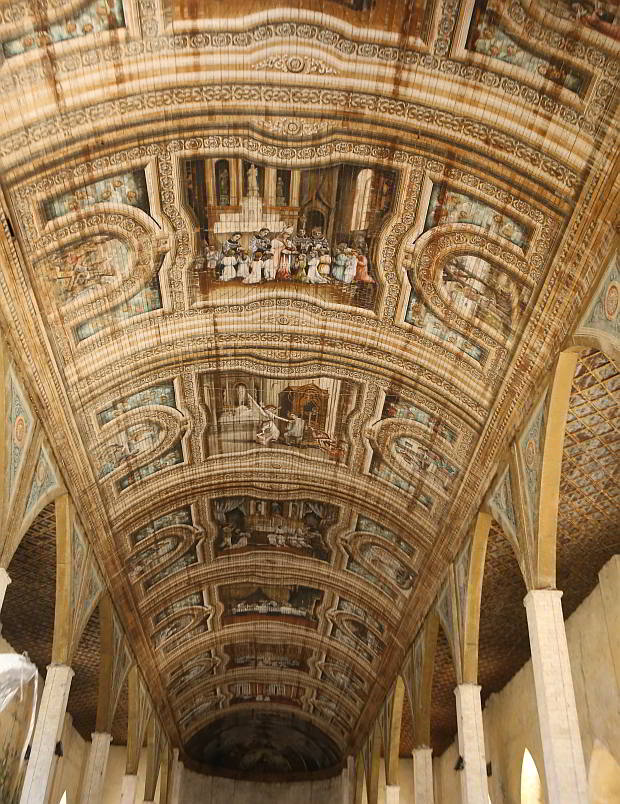
Raymundo Francia painted the ceiling. He used a method of ‘quadratura’, a type of ceiling painting popular in Baroque period. (CDN PHOTO/ LITO TECSON)
Above a newer retablo, the ceiling features the seven-paneled painting of the creation of the world. The 14 stations of the cross are mounted on the damp coral-stone walls.
Just after entering the gothic wooden doors on the epistle side of the church is a tombstone of Doña Petrona de Teves and her daughter La Señorita Claudia Teves.

A cross and wreath made of porcelain is placed above the tombstone of Doña Petrona de Tevez and daughter La Señorita Claudia Tevez. who died in 1912 and 1913. (CDN PHOTO/ MARIAN Z. CODILLA)
Above the tombstone is a cross and a wreath made of porcelain as an eternal offering from their beloved.
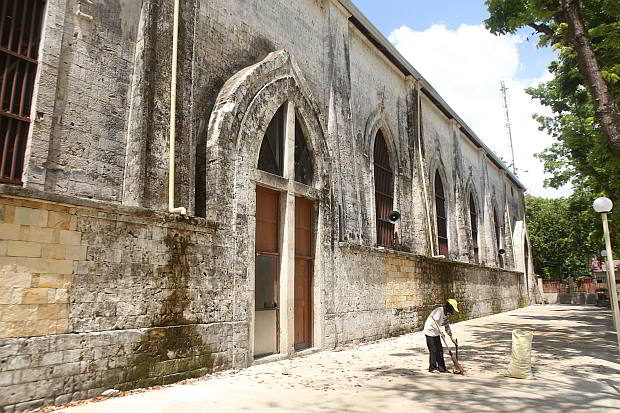
Earthquake dislodged some coral stones used as a cladding above the lateral door on the right transept of the church. (CDN PHOTO/ LITO TECSON)
The cladding and cornices above the door on the right transept of the church are made of coral stones.
These stones were dislodged during the Oct. 15 earthquake last year but were eventually restored to their original arrangement.
San Guillermo de Aquitania Parish
Dalaguete town, Cebu
The strong tremors dislodged some of the coral stones from the three-bodied octagonal bell tower and portions of the old convent.
Laborers are repairing the tower, the façade and some cracks of the more than 200-year-old church. Meanwhile, the interior features an original ceiling fresco by Canuto Avila and his sons.
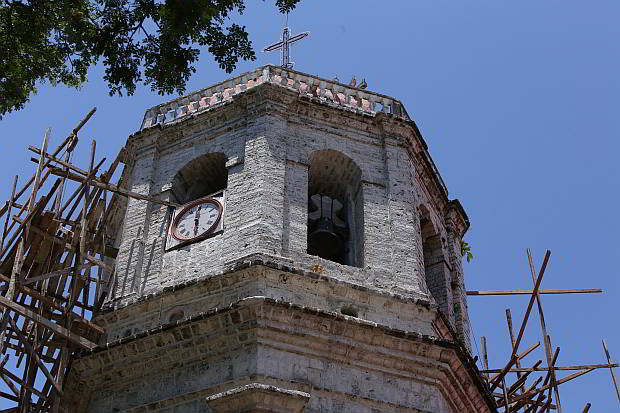
Repairs are ongoing for the bell tower that was affected by the 7.2 earthquake last year. (CDN PHOTO/ LITO TECSON)
The original intricately-designed wooden retablo framed by a raised balcony on both sides, the harlequin-patterned floor, even the bronze oil lamp chandeliers are still in use. The church is recognized as a national historical landmark.
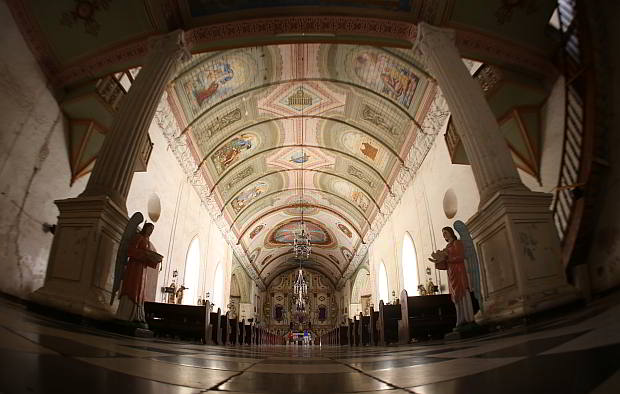
Two angels guard the entrance of the magnificently designed interior of San Guillermo de Aquitania Parish.
(To be continued)
Disclaimer: The comments uploaded on this site do not necessarily represent or reflect the views of management and owner of Cebudailynews. We reserve the right to exclude comments that we deem to be inconsistent with our editorial standards.
